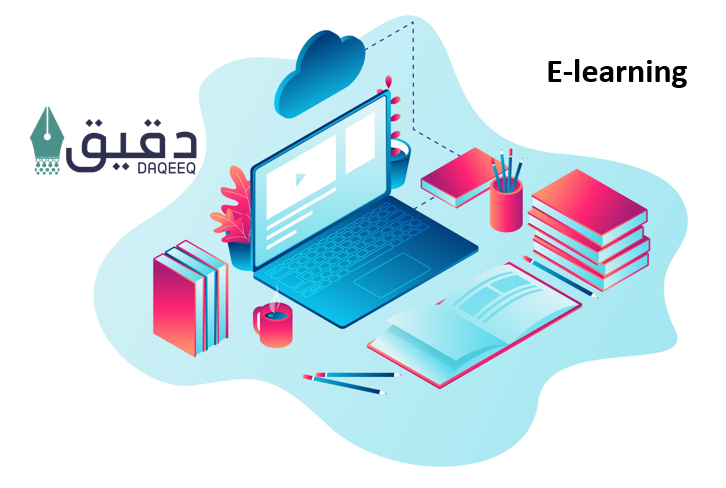Category: Translation & Technology Written by: Daqeeq Date: 10 Jan 2021
Daqeeq says….
E-learning and the need for localization
DAQEEQ (Dubai) –– The spread of the Internet and its high accessibility have led to a major change in the way we do things in our lives, and there has emerged an urgent need to adapt to this change and development to keep pace with the progress.
Education was one of the main sectors that have taken advantage of the Internet, as the rapidly growing capabilities of the Internet increased the possibility of viewing videos and even broadcast them live, which led to the integration of e-learning in the educational process. The Coronavirus pandemic has caused a quantum leap in this shift, with e-learning gaining ground and strengthening its position significantly as number-one choice for all educational institutions.
-
What is e-learning
E-learning, or electronic learning, is the teaching and training through digital resources and platforms. It is provided through electronic devices such as computers, tablets and even phones that are connected to the Internet and is based on formalized learning. This makes it easy for users to learn anytime, anywhere, with few, if any, restrictions.
E-learning beats regular learning in many domains: It doesn’t require you to be physically there, as most e-learning courses are self-paced, no restrictions on age or previous certificates; it simply makes learning anything possible for anyone anytime.
-
Importance of e-learning
The importance of e-learning stems from its multiple usages. It can be used by employers to sharpen the skills of their employees, or by individuals to gain more knowledge about their fields or other fields they’re interested in, while it can be used by students of formalized learning to clarify some ideas that are difficult for them to understand. Also, fresh graduates can fill the gaps of the formalized learning and increase their experiences to keep pace with the market needs; and finally, children and adults in conflict zones who cannot access formalized education can benefit from it.
E-learning is a great opportunity for investing as its market value is expected to reach $275 billion by 2022. Moreover, with the current pandemic, we can notice formalized learning facilities (schools & universities) using e-learning.
Here’s a list of top e-learning platforms:
-
Udemy
-
Edx
-
Coursera
-
Edraak
-
نون أكاديمي
-
أكاديمية قاف
-
رواق
-
What is localization
First things first; what’s the difference between translation and localization? Translation is the process of converting a text from one language to another, while localization takes into account cultural references and adapts the content (both text and visual) for the target country (e.g. changing measurement systems, adding or changing words to help a local reader).
In other words, localization is rewriting the original content to fit the target audience and make it looks like it was written for them. It is more challenging than translation and requires more efforts, as it uses terms and words that are more known to the local audience; for example, the literal translation of English proverbs does not fulfill the intended meaning, so it must be translated with the corresponding meaning in Arabic to be understood.
-
Importance of e-learning localization
It’s a human nature that we have no problem spending hours watching TikTok fun videos, but when it comes to knowledge and learning, we subconsciously will be looking for anything to close the course we’re trying to take and do something else. So it is very important that your English e-learning content is not only translated to Arabic but rather localized to make it more appealing for Arab speaking students.
And in a very related topic to e-learning localization, Nieman Journalism Labs conducted a study which proved that geo-targeted Facebook posts have six times more engagement than those shared globally. And we can safely generalize these findings to e-learning.
-
How to localize your e-learning contents?
E-learning comes in a variety of forms, from a traditional video to interactive quizzes and assessments. The most common features and elements that need localization and translation are the following:
-
Written content
-
Graphics
-
User Experience elements (e.g. navigation buttons)
-
Audio and video
-
Formatting (e.g. date formats)








No comments yet.